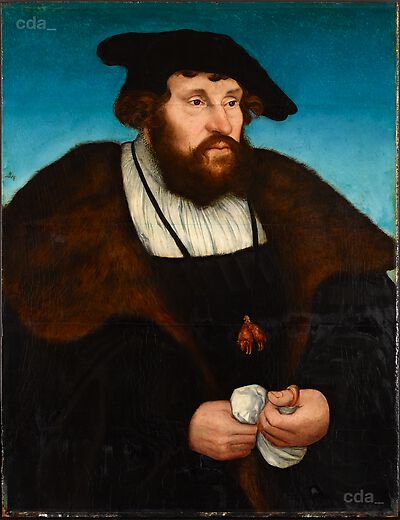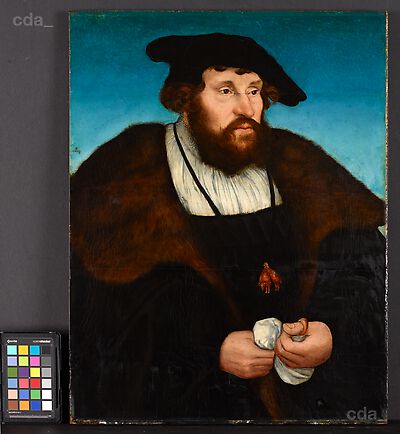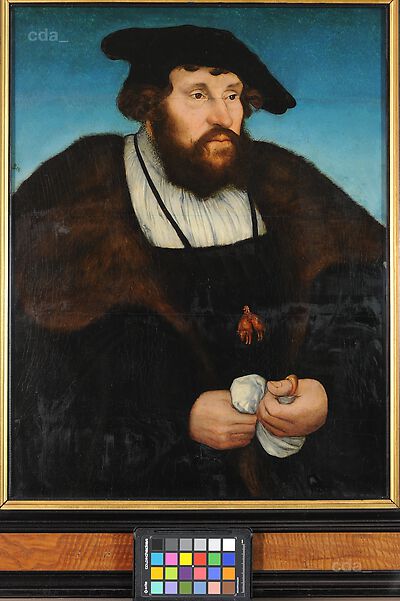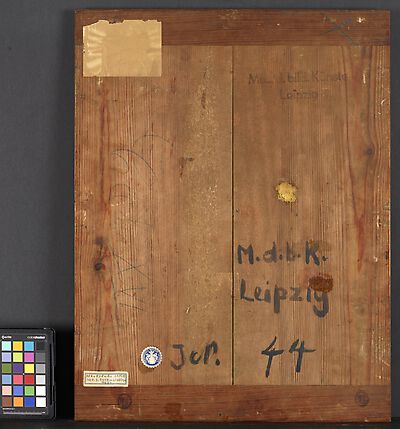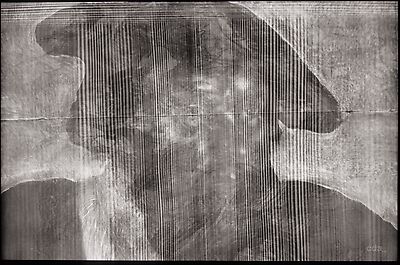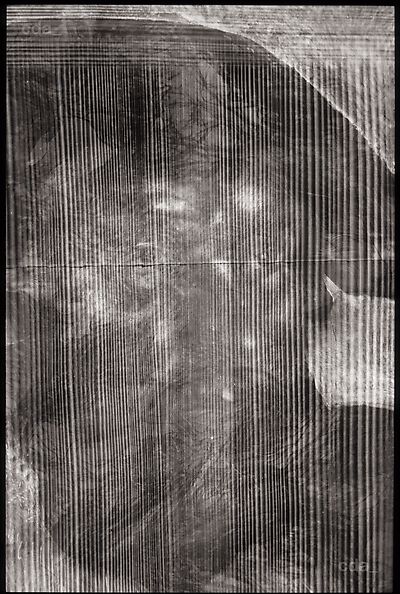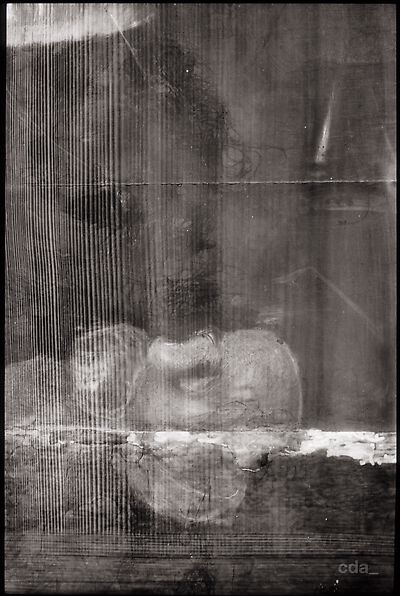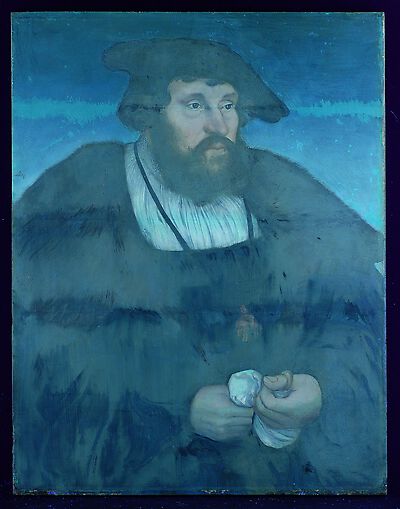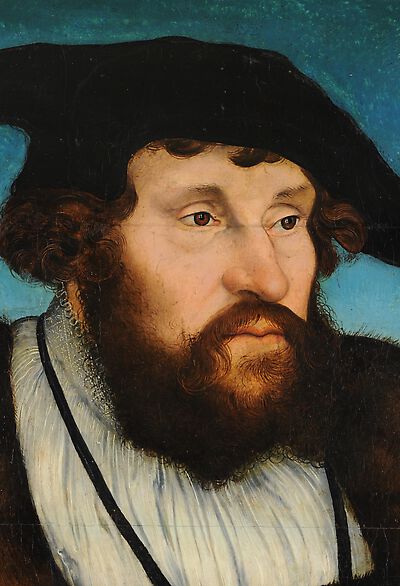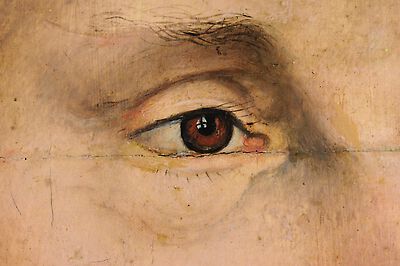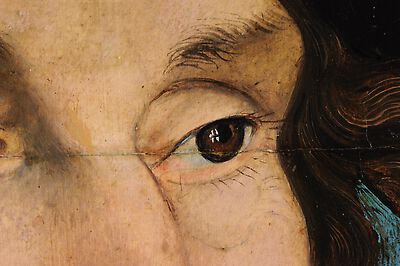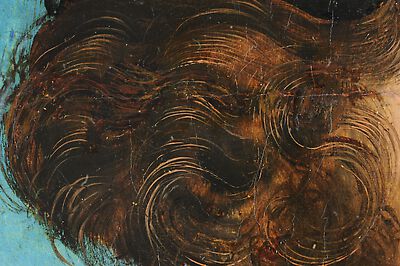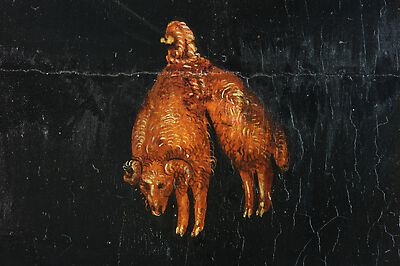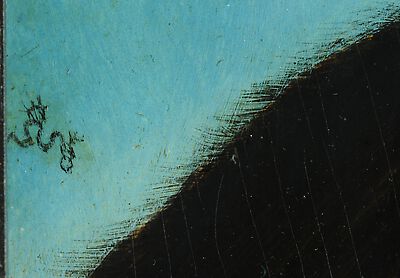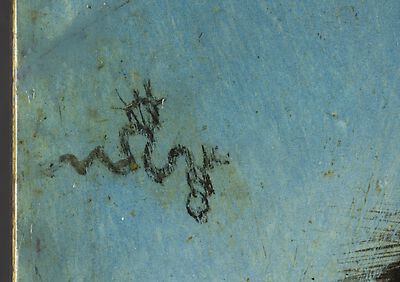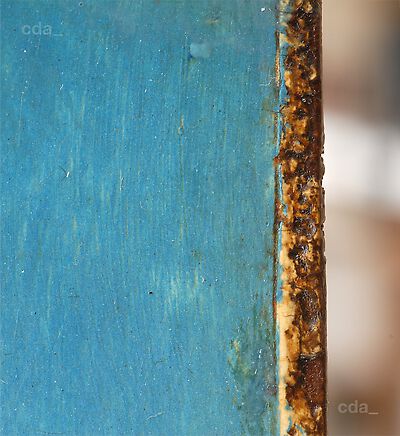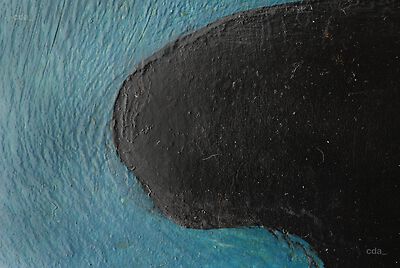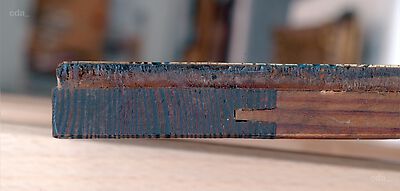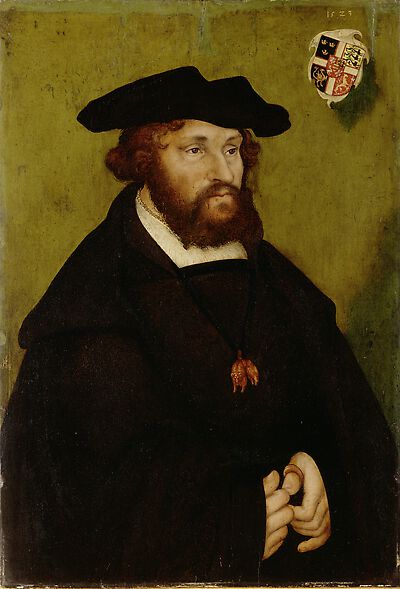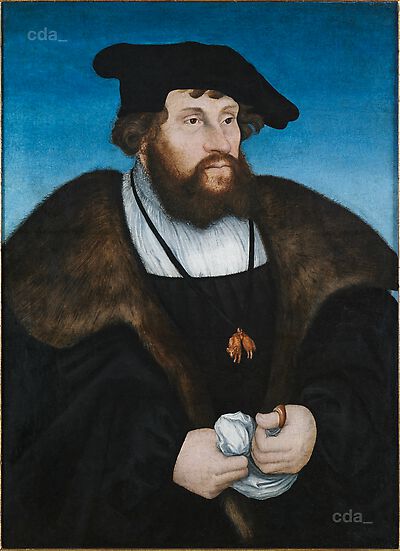Support
- limewood (Tilia sp.), identification of wood species, 26.10.2013, document in the painting file in the MdbK, carried out by Prof.Dr. Peter Klein
- four horizontally aligned boards with butt joints
- board widths: I: 10.8 (l.)/10.9 (r.); II: 12.6 (l.)/ 12.7 (r.); III: 10.6; IV: 20.7 (l.)/ 20.8 (r.)
- no visible reinforcement of the joins and repair of damaged wood
- the original surface on the reverse was lost when the panel was thinned and laminated
- the edges of the panel are straight; it was later trimmed on all four sides
Ground and Imprimatura
- white, probably chalk/glue (not tested)
- relatively thick
- barbe only partially retained and visible on the right side. The ground and paint appear to have been applied while the panel was fixed in a working frame. On the right side the ground appears to have extended beneath the frame unevenly and contains some bubbles, see photo.
- along the right edge a straight line was incised into the wet ground. Two reasons may be assumed: 1. to define the pictorial plane, or 2. to prevent the ground from being torn off the panel when it was removed from the working frame.
- neither an imprimatura nor marks from a tool are present
Underdrawing
- thin lines executed with a pen or a stylus visible in areas of the flesh paint, the hands and the hat were executed with a pointed brush
- the underdrawing is visible in normal light beneath the areas of flesh paint, in the eyes, the nose and the mouth
- there is an incised vertical line along the right edge
- only the portrayed head exhibits outlines identical with the final painted version, small alterations were made in the hands and the hat is slightly smaller in the final painted version
- pouncing marks are visible in the face (particularly evident on the left eye) that were linked by thin lines drawn with a pen after the design had been transferred to the panel
Paint Layers and Gilding
Flesh paint on white ground:
- an initial, very economical grey wash was applied in the areas of shadow, wet-in-wet and blended. Above this a semi-opaque to opaque flesh tone was applied wet-in-wet and blended. The grey in the shadows shines through, but was also added on top and blended with the flesh tones. The contours were also in part blended (nose), hair. Finally the highlichts in the hair and flesh paint were added, as were the dark contours of the hair and beard (see fur-collar).
Robe:
- grey underpainting, over this a semi-transparent to opaque very dark grey; a lighter grey was employed for the highlights and was blended wet-in-wet. Later a pure black was applied to indicate folds. The fur-collar was initially executed with a streaky glaze (much thinner than in the coat), after the drying process it was modulated with semi-opaque brown paint, the hairs were then blended wet-in-wet
Background:
- the figure was held in reserve and the background was painted first. In raking light relief paint outlining the figure is visible. Once the grey paint had been applied the blue background was built up: light blue was applied with a brush, after this layer had dried dark blue paint was applied wet-in-wet and blended by dabbing.
- strokes, dabs (blue background) as well as glazes
- broad flat brush for the fur, probably a bristle brush for the background. The paint consistency is somewhat viscous in the background.
- along the right edgr the paint has to an extent run beneath th working frame
Framing
- not original, probably 19th century
- dimensions: 73.5 x 61.1 x 4.6 (including additional battens: 5.6) cm
- mortoise and tenon frame, overlapping on the reverse, mitre join at the front; profile attached to the flat surface; colour: profile black, flat surface: verneer (walnut), gilded rebate inlay with a small flute
[Museum der bildenden Künste, 11.06.2014
